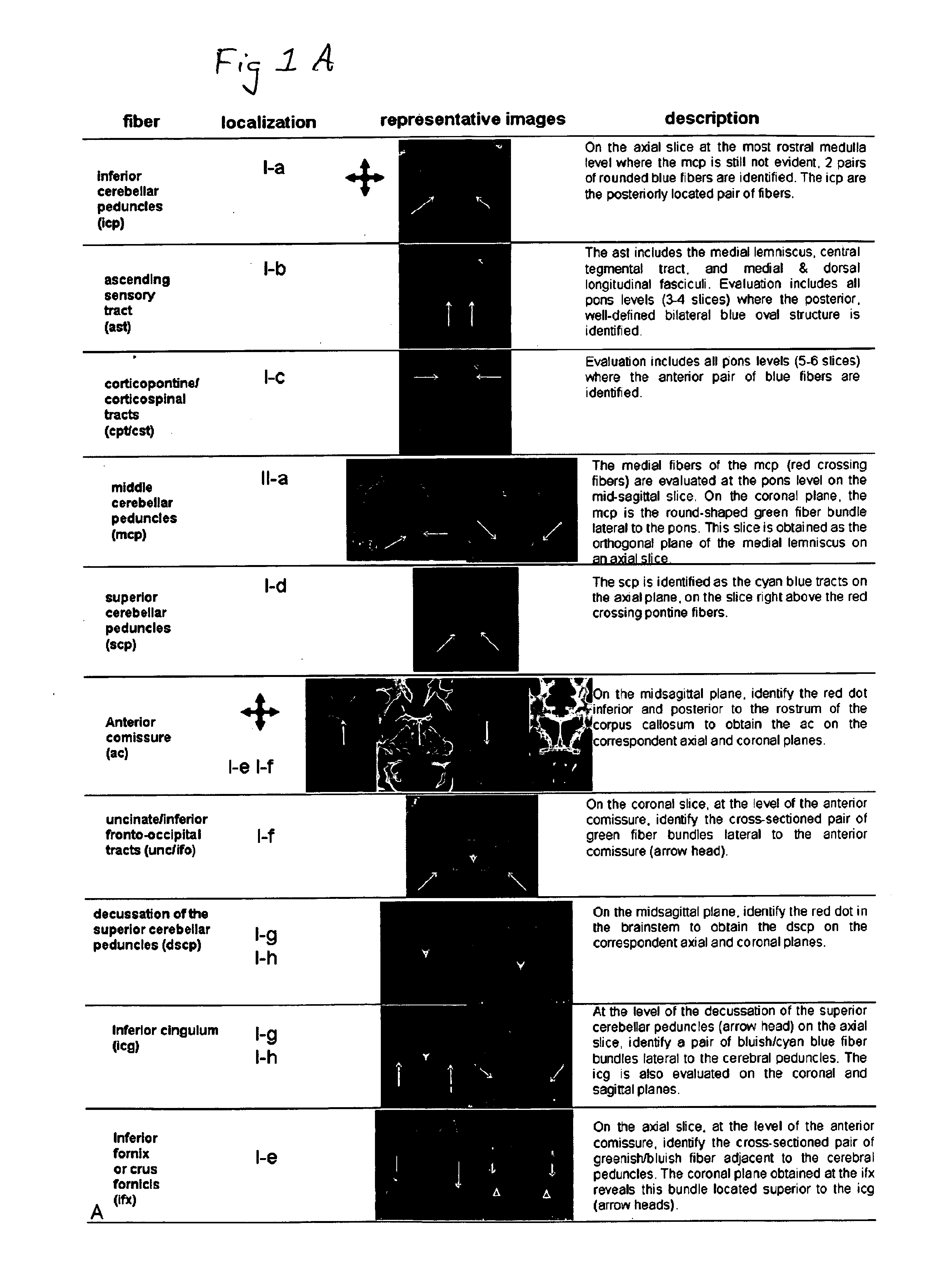Focal noninvasive stimulation of the sensory cortex of a subject with cerebral palsy
a sensory cortex and non-invasive technology, applied in the field of brain, can solve the problems of affecting the development of proper and/or full bone and skeletal development, affecting the coordination of movements on the other end of the spectrum, and narrowing of joint spaces, so as to restore normal levels of neuronal electrical activity, restore the health of neurons and synapses, and restore the effect of somatosensory activity
- Summary
- Abstract
- Description
- Claims
- Application Information
AI Technical Summary
Benefits of technology
Problems solved by technology
Method used
Image
Examples
example 1
Selection of Pediatric CP and Control Populations
[0139]In this example, 37 children with CP associated with PVL and 35 healthy controls were evaluated with DTI as set forth above. Criteria for identification of 26 white matter tracts based on 2D DTI color-coded maps were established, and a qualitative scoring system, based on visual inspection of the tracts in comparison with age-matched controls, was used to grade the severity of abnormalities. An ordinal grading system (0=normal, 1=abnormal, 2=severely abnormal or absent) was used to score each white matter tract.
[0140]In order to evaluate childhood CP, 37 patients with CP were consecutively scanned with DTI. Criteria for enrollment in the study were: 1) aged birth to 18 years, 2) diagnosis of CP, and 3) a clinically indicated brain scan (for diagnosis or follow-up).
[0141]In this example we focused on a subsample of 24 children born at fewer than 37 weeks gestation with PVL diagnosed by neuroradiologic review of conventional MR im...
example 2
Identification of Fiber Tracks
[0144]Criteria for DTI-based identification of various white matter tracts at 26 locations were established and applied to 24 children with CP associated with PVL as well as in a group of 35 unaffected controls to elucidate further the diversity of white matter tract injury involvement in PVL. The qualitative scoring system, based on visual inspection of the white matter tracts, was used to describe the status of the various white matter tracts.
[0145]Fiber tracking was performed by using DTIStudio, which uses the fiber-assignment continuous tracking approach. (Mori S, Crain B J, Chacko V P, et al. Three-dimensional tracking of axonal projections in the brain by magnetic resonance imaging. Ann Neurol 1999; 45:265-69) By combining information from FA and vector maps, this approach allows for 2D and 3D reconstruction of fibers in a continuous vector field. The threshold chosen for FA was 0.15 and the angle threshold, 60°. These thresholds were lower than t...
example 3
Scoring of Fiber Tracts
[0147]Once the tracts were identified on the basis of the protocol described in the previous Example (also see., e.g., FIG. 1.), an evaluation was completed by using all 3 orthogonal planes of the interactive viewer in DTIStudio. An ordinal grading system (0=normal, 1=abnormal, 2=severely abnormal or absent) was used by the primary study rater to score each tract.
[0148]Abnormalities of the white matter tracts were based on size reduction on visual inspection in comparison with age-matched controls, in which white matter tracts were all scored 0. The recognition that a significant decrease of diffusion anisotropy could lead to the appearance of a smaller tract size and thus be scored as abnormal was considered in the interpretation. If size reduction of the tract was identified, the tract was scored as abnormal (score 1). A questionable abnormality was conservatively scored as normal. A structure absent or so abnormal that it could hardly be identified was char...
PUM
 Login to View More
Login to View More Abstract
Description
Claims
Application Information
 Login to View More
Login to View More - R&D
- Intellectual Property
- Life Sciences
- Materials
- Tech Scout
- Unparalleled Data Quality
- Higher Quality Content
- 60% Fewer Hallucinations
Browse by: Latest US Patents, China's latest patents, Technical Efficacy Thesaurus, Application Domain, Technology Topic, Popular Technical Reports.
© 2025 PatSnap. All rights reserved.Legal|Privacy policy|Modern Slavery Act Transparency Statement|Sitemap|About US| Contact US: help@patsnap.com



